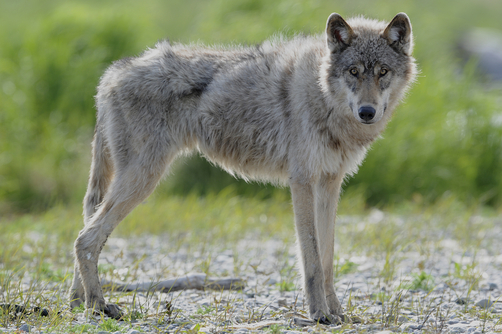The boy that called ‘gray wolf’.
- The scientific name of the gray wolf is canis lupus, and they are largest in the family Canidae, which is the family of dogs, wolves, foxes and other similar animals, and they can have the spelling ‘grey wolves’, while the females are known as ‘she-wolves’.
- Gray wolves have a lifespan, in the wild, for about seven to eight years and are native to North America, North Africa and Eurasia, but are now mainly found in Alaska, Canada, North America, Russia, Eurasia.
- Gray wolves have a diet that consists of mainly of medium to large hoofed animals but sometimes they consume other small animals, fruit, vegetation and other food they can find.
- As the name suggests, the furry coat of gray wolves is generally grey, but they can be brown, black, white or red in colour.
Gray Wolf
Image courtesy of National Geographic
- Gray wolves range from 36 to 45 kilograms (79 to 99 pounds) in weight, and can reach speeds up to 60 kilometres per hour.
- Gray wolves have large, sharp teeth that, with enough pressure, can crush bones, and in a single meal, they can consume and digest food equal to 15 to 19% of their own weight.
- Gray wolves can control their body-heat by quickening or slowing their flow of blood and while their sense of smell is not as advanced as some others in the canine family, they make it up with good tracking skills and nocturnal eyesight.
- Gray wolves usually live in packs of 5-11 wolves and generally pair for life, usually having a litter of 5 to 6 pups each year.
- Gray wolves can make a very loud howl to communicate with each other, to signal a gathering, to locate or to warn, that can be heard 130 kilometres (50 mile) away, and they can also make whimpers, growls, barks, snarls, yelps and whines.
- Gray wolves do not often attack humans, particularly since they have a fear of humans embedded by hunters who killed one third of the original population.
Bibliography:
Gray Wolf, 2013, Defenders of Wildlife, http://www.defenders.org/gray-wolf/basic-facts
Gray Wolf, 2013, Wikipedia, http://en.wikipedia.org/wiki/Gray_wolf







